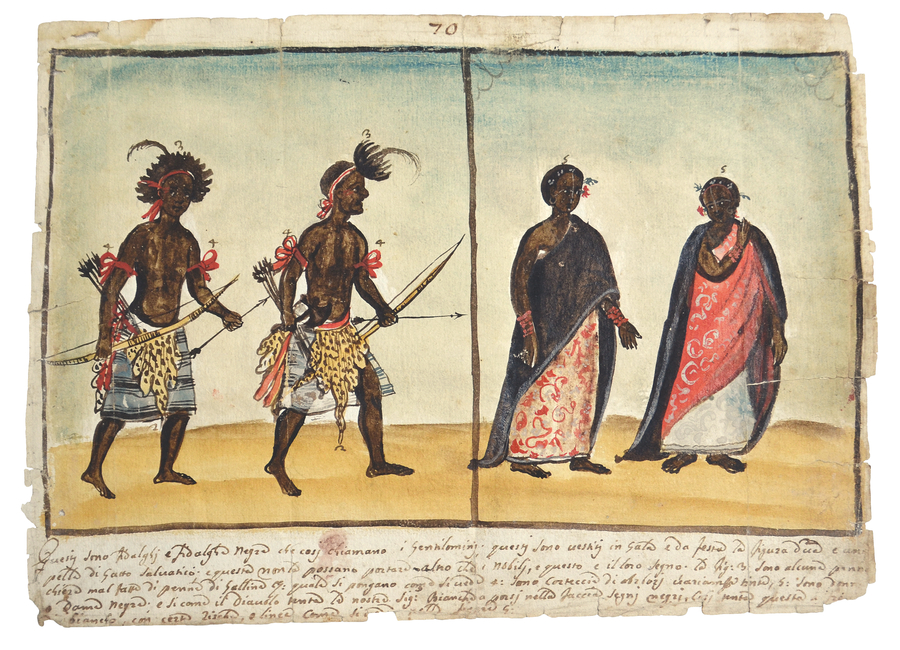PW070: Black male and female aristocrats
Questi sono fidalghi e fidalghe1 negre cosi chiamano i gentilomini; questi sono vestiti in gala e da festa la figura due e una pelle di gatto salvatico; e questa non la possono portare altro che i nobili, e questo e il loro segno. La fig: 3 sono alcuna pennechiere mal fatte di penne di gallina &: quale si pongono come si vede 4: sono corteccia di Arbori variamtetinte, 5: sono donne o Dame negre; e si come il diavolo tenta le nostre Sig:e bianche a porsi nella faccia segni negri, cosi tenta queste a [. . .] di biancho con certe rische2 o linee come si vedde nella figura 5
These are the black fidalghi and fidalghe as they call the nobles; they are dressed in gala and for a feast figure 2 is a pelt of a wild cat; and this only nobles can wear, and it is their insignia; figure 3 are some poorly made panaches of chicken feathers etc. which they wear as can be seen 4: these are tree bark dyed in different ways, 5: they are black ladies or Dames, and just as the devil tempts our white Ladies to put on their face black marks, thus it tempts these to [. . .] white with some stripes or lines as can be seen in figure 5

Add new comment